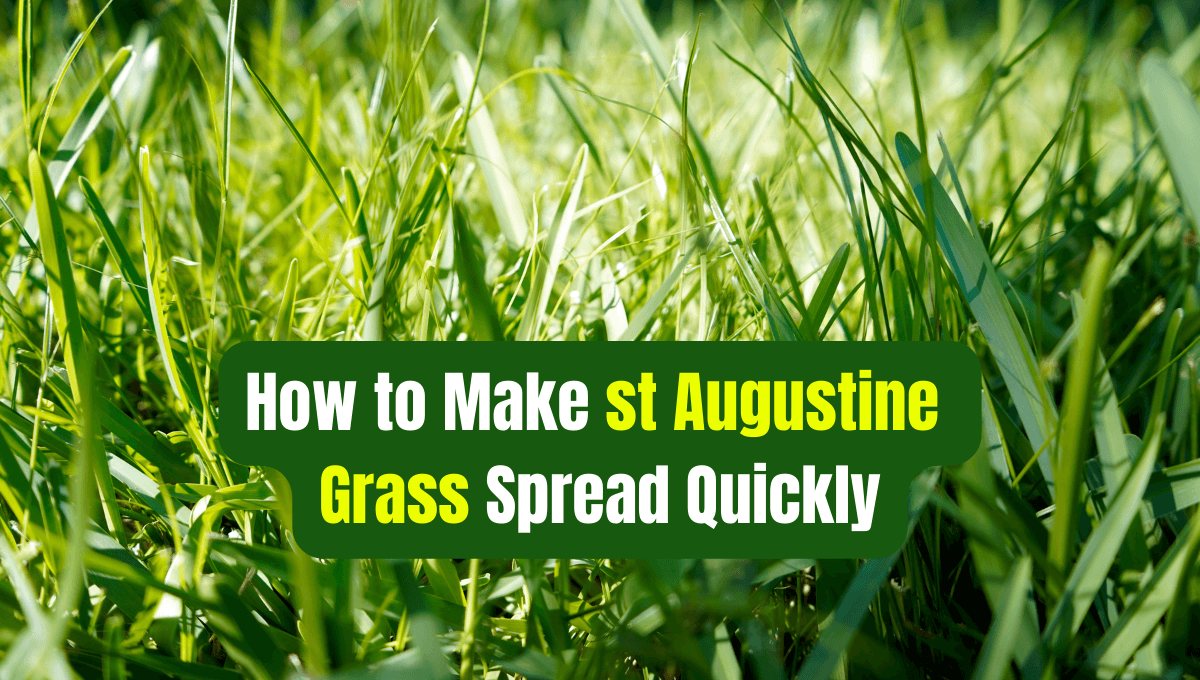How to Make St. Augustine Grass Spread Quickly
St. Augustine grass, with its lush, emerald blades and vigorous growth, is a dream come true for many homeowners. But what if your dream lawn seems to be taking its sweet time filling in? Fear not, fellow grass enthusiasts! This guide will equip you with the knowledge and techniques to turn your patchy lawn into a verdant oasis in no time.

Nature’s Built-in Advantage: Understanding St. Augustine Grass Growth Habits
St. Augustine grass is a warm-season wonder, thriving in temperatures between 70°F and 90°F. Its secret weapon for rapid spread lies in its stolons, horizontal stems that creep along the ground, sending up new shoots at their nodes. These stolons can extend several inches per week under ideal conditions, effectively weaving a dense, weed-suppressing carpet.
Creating the Perfect Canvas: Optimal Soil and Planting Conditions
Before your stolons can sprint, they need a fertile and well-drained starting line. Here’s how to set the stage for success:
- Soil pH: Aim for a neutral to slightly acidic pH between 6.0 and 7.0. A soil test will reveal your current pH and any necessary amendments.
- Drainage: St. Augustine dislikes soggy feet. Ensure proper drainage by aerating compacted soil and grading your lawn to slope away from structures.
- Sunlight: Full sun is ideal for optimal growth, but the grass can tolerate some light shade.
Also Read: 5 Fabulous Ideas to Beautify your Backyard
Fertilizing for Faster Growth: Fueling the Green Machine
Think of fertilizer as the rocket fuel for your stolons. Choose a balanced fertilizer with a focus on nitrogen, especially during the growing season. Apply according to the manufacturer’s instructions and avoid over-fertilizing, which can burn your grass.
Watering Wisely: Finding the Sweet Spot
St. Augustine thrives on deep, infrequent watering. Aim for one inch of water per week, delivered in one or two long sessions, allowing the soil to dry slightly between waterings. This encourages deep root growth, making your lawn more resilient to drought.
Mowing for Maximum Spread: Leave the scalping shears in the shed! St. Augustine prefers to be mowed at a higher height, between 3.5 and 4 inches. This shades the soil, keeping it cool and moist, and allows the stolons to flourish.
Weed Control: Clearing the Path for Progress
Weeds are unwelcome guests at your green party. Practice preventive measures like pre-emergent herbicides and hand-pulling stubborn invaders. A healthy, well-maintained lawn naturally suppresses weed growth, so focus on creating the ideal environment for your St. Augustine to thrive.
Bonus Tip: Aeration for Breathless Roots
Thatched roofs might be charming on cottages, but not on your lawn. Thatch, a layer of dead organic matter, can suffocate your grass and hinder its spread. Aerate your lawn once or twice a year to allow air, water, and nutrients to reach the roots, giving your stolons the oxygen boost they need to take off.
Patience is a Virtue: Enjoying the Journey
Remember, Rome wasn’t built in a day, and neither is a lush St. Augustine lawn. While you might see noticeable improvement within weeks, achieving full coverage can take several months. Be patient and consistent with your care practices, and soon you’ll be basking in the emerald glory of your very own St. Augustine paradise.
With the right knowledge and a little TLC, you can transform your patchy lawn into a vibrant green oasis. So, grab your gardening gloves, unleash the power of stolons, and watch your St. Augustine spread like wildfire (the good kind)!
Remember, a healthy lawn is a happy lawn, so enjoy the process and celebrate every new blade that emerges. Happy green thumbs!




